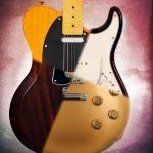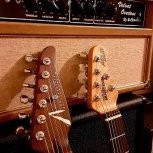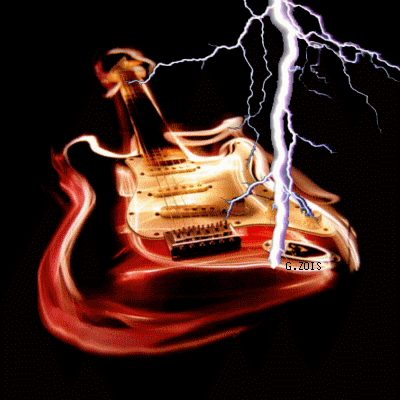Πίνακας συμμετοχής
Δημοφιλές περιεχόμενο
Προβολή δημοσφιλέστερου περιεχομένου σε 11/29/19 σε Αναρτήσεις
-
…επί του αμφιλεγόμενου θέματος Πέντε απαντήσεις κατευθείαν από τη Fender. Μια απάντηση από τον John Levan πολύ γνωστό αρθρογράφο σχετικά με κιθάρες. Μια απάντηση από STEWMAC. 1η απάντηση κατευθείαν από τη Fender: Justin Gaudet (Fender) Hey TsulfasGuitars, Thanks for reaching out. The trem claw, along with the springs, helps with the balance of the bridge and how much the bridge will rise up under string tension. Sometimes when certain string gauges are used this can wind up in a situation where the claw is angled slightly. Do you have a photo? 2η απάντηση Fender: Εδώ είχα το ΘΡΑΣΟΣ να στείλω τη πρώτη φωτογραφία του gmoukou ΚΑΙ όχι μια φωτογραφία Fender!!! I'm not sure why he did that but it would be tough to say as this is not a Fender guitar. Usually you can just back the screw on the claw out until it matches the other side but I'm not sure on this build if it will have an effect on the tension. 3η απάντηση Fender: εδώ του ζητάω συγνώμη που έστειλα μια φωτογραφία κιθάρας που δεν ήταν Fender, και του ξαναστέλνω φωτογραφία με μια Fender κιθάρα: The angle could have something to do with evening out the tension depending on string gauge etc. to keep the bridge nice and balanced. If it's not to your liking you can definitely even it out but this may have some effect on the bridge setup. 4η απάντηση Fender: έστειλα σε άλλον τεχνικό μήνυμα για να έχουμε και δεύτερη άποψη από Fender Tim Dorning (Fender Musical Instruments) Hi there, Thanks for your email. Setup on guitars is all a matter of personal preference - some techs will set the claw at an angle to balance string tension across the bridge, or to tune the response of the tremolo across certain strings. A qualified guitar tech would be able to give you more detailed info! 5η απάντηση John Levan γνωστό αρθρογράφο από Premier Guitar Greetings from Tennessee! When I setup a trem, I adjust the claw parallel to the cavity wall. Since there are a lot of moving parts in a trem, anything you can do to maintain consistent pressure will help keep the guitar in tune. There are a few tricks you can do to keep it from binding (thus causing tuning issues). You can add small a spring around the claw screws to keep the pressure consistent, as to minimize any movement (between the claw and the cavity). In addition, I like to use three springs (with the outside springs angled to the center of the claw. This keeps the tension "centered" between the screws holding the claw into the cavity. Keep in mind that it's difficult to keep any non-locking trem in tune when you use the whammy bar, but these tricks will help minimize tuning issues. 6η απάντηση από STEWMAC Hi TsulfasGuitars, There is lots of debate online regarding this. Personally I do not see a difference and setup guitars with the claw straight and not angled. The best way to determine if it makes a difference for you would be to try both methods.3 βαθμοί
-
Αν και δεν ήταν βασική ανάγκη η προσθήκη μιας ακόμα κιθάρας, τελικά την έκανα την αγορά μου.. Περισσότερο για πειραματισμό θα έλεγα, καθώς η αγορά αυτή δεν έχει πολύ μεγάλο "ρίσκο", από οικονομικής σκοπιάς.. Κατέληξα λοιπόν σε κάτι οικονομικό, αλλά σε γενικές γραμμές διαβάζω πολύ ικανοποιητικά σχόλια στο ιντερνετ.. Καιρό τώρα με "έτρωγε" να δοκιμάσω αυτήν την μάρκα.. Ελπίζω να μου βγει σε καλό! Χαρακτηριστικά: · Σώμα: American Alder · Λαιμός: Hard Maple – Bolt On / Σφένδαμος-Κελεμπέκι · Ταστιέρα: 1 piece maple / Σφένδαμος - Κελεμπέκι · Scale: 25.5"/648mm · Τάστα: 22 Medium · Neck Inlays: Pearloid Dot · Nut: White Graphite · Κλειδιά: Wilkinson® Deluxe WJ55S · Γέφυρα: Wilkinson® WTB Intonable · Μαγνήτες: 2 Wilkinson® Single Coils (N) WVTN Alnico (B) WVOB Alnico · Hardware: Nickel · Controls: 1 Volume/ 1 Tone/ 3-Way Lever · Χρώμα: Relic Butterscotch Ελπίζω να παραλάβω σύντομα, για να σας κάνω ένα review...2 βαθμοί
-
2019 Update: Guitar: Wampler Decibel+ Carl Martin tuner TC Electronic Sub n' Up MXR Phase 90 Strymon Orbit flanger TC Electronic Sentry noise gate και στο send return του τα Rockett Archer, Skreddy Rust Rod και Friedman BE-OD. Από το output του Sentry, MXR 10band EQ Greer Special Request Amp Το HX Effects παίρνει σήμα από Line Out απ'τον ενισχυτή, πάει στο Jamman Looper και παίζουν stereo με άλλον τελικό για wet/dry/wet. Τροφοδοσία από 2 Voodu Lab ISO 5.2 βαθμοί
-
Πολυ οικονομικα την αγορασες. Τοσο κοστιζει χωρις το ρελικ, απο εξωτερικο. Πολυ καλη επιλογη. Εαν σε βολεψει το πλατυ μανικι, ειναι σουπερ σε ολα τα υπολοιπα. Καλοριζικη!1 βαθμός
-
1 βαθμός
-
1 βαθμός
-
Διαφημιση του χωρου εργασιας μου ηθελα να κανω, αλλα με τσακωσες! ?1 βαθμός
-
1 βαθμός
-
@gkourmoul1 μάθαμε και που μένεις και το τηλέφωνο σου και τι πήρες και ποσο έκανε! Προσεχε ρε συ.1 βαθμός
-
Σπουδαίος μουσικός κατά την γνώμη μου, με όραμα και συνεχείς μουσικές ανησυχίες - αναζητήσεις. Επίσης είναι από τους λίγους μουσικός που μου βγάζουν μια αίσθηση ότι "το πονάει" αυτό που κάνει και ό,τι κάνει το κάνει με παθος, ακόμα και αν αυτό που κάνει αποδειχθεί ψιλοπατατα (βλ. Endless Wire και άλλα). Οι παραπάνω δηλώσεις είναι στο πλαίσιο της βρετανικής ιδιοσυγκρασιας και βρετανικού μαύρου χιούμορ. Είναι δύσκολο να τις καταλάβει κάποιος που δεν είναι σχετικός με αυτό, η αλήθεια είναι. Και ορθώς θα το παρεξηγησει και θα το κατακρινει, είναι τέτοια η φύση του βρετανικού αυτού χαρακτηριστικου, προβοκατορικη. Γι αυτό και ο ίδιος έσπευσε πρόσφατα να εξηγηθεί για τις δηλώσεις αυτές. Έχω χαμηλά τον πήχη για το νέο "άλμπουμ των The Who" και από εκεί και πέρα ό,τι ήθελε προκύψει.1 βαθμός
-
Φρένο ΕΚΤ στη μείωση του ορίου χρήσης μετρητών https://www.euro2day.gr/news/economy/article/1708589/freno-ekt-sth-meiosh-toy-orioy-hrhshs-metrhton.html?fbclid=IwAR34mxbAftPUrbMcZ9JXsR9ky-n9z68XnJEd1nLRvn5p1crg8vFkDl1xpk0 πηγή: euro2day1 βαθμός
-
1 βαθμός
-
Ο συγκεκριμενος fender εαν ειχε μονο το καθαρο του καναλι χωρις ολα τα αλλα ψηφιακα κολπα, θα τον ειχα αγορασει "χθες" και με παραπανω τιμη. Εχει ηχαρα, και ειναι αψογη πλατφορμα για πεταλια. Οι high gain ηχοι που εχει ειναι γτπ. Αλλα, λογω ολων αυτων των ψηφιακων φοβαμαι πολυ την αξιοπιστια του. Εχοντας διαβασει πολλα γιαυτον, θεωρω οτι εαν παθει κατι, εκτος εγγυησης, τον πετας. Με τον κατανα δεν θα ειχα τετοια ανησυχια. Καλοριζικος! Τσιμα τσιμα τον προλαβαινεις... https://smart.noiz.gr/details.php?id=4386861 βαθμός
-
1 βαθμός
-
ΘΕΑ.... κάπου εκεί αρχές '80ς το είχα αγοράσει σε 45άρι,. Έχω εδώ και 3-4 μέρες που το ψάχνω και δεν το βρίσκω ρε γαμώτο...ή το δώρισα, ή το "έχασα", ή μου το πήραν..αρχίζω να ξεχνάω, γεράματα.....!1 βαθμός
Ο πίνακας επιτευγμάτων έχει ρυθμιστεί σε Athens/GMT+03:00











